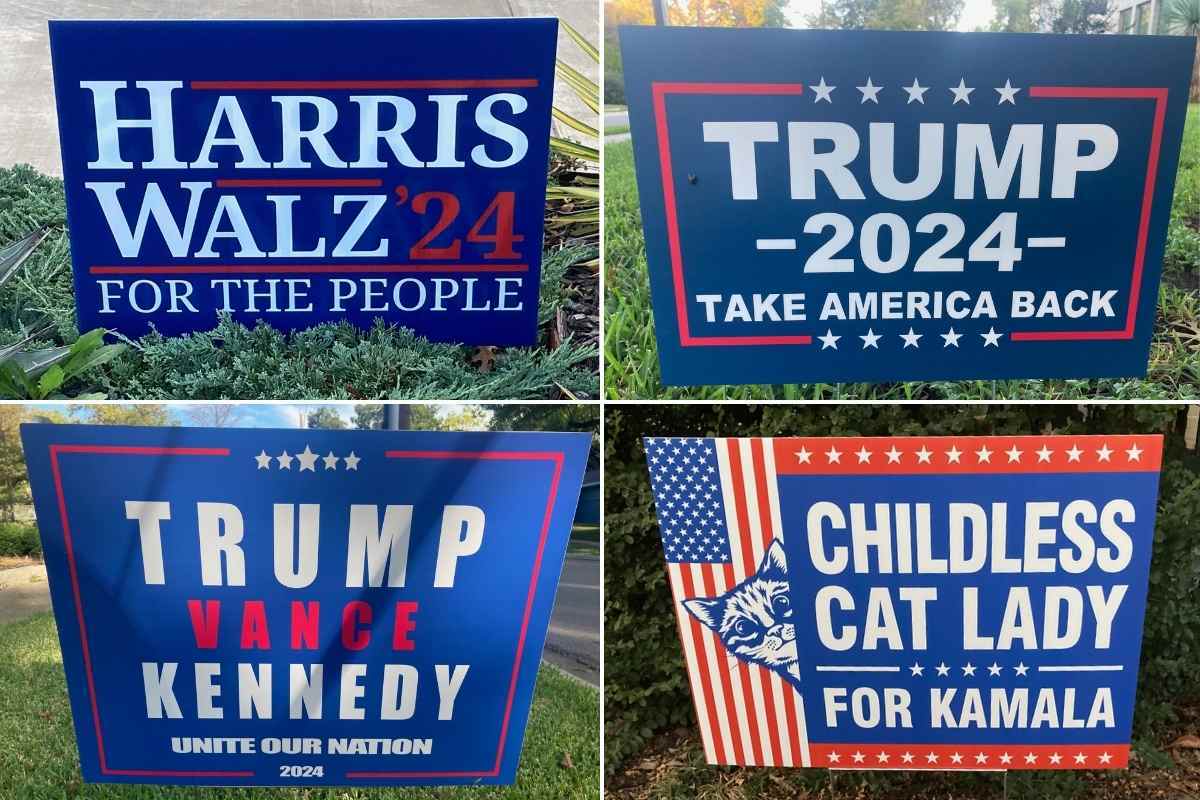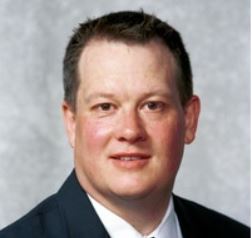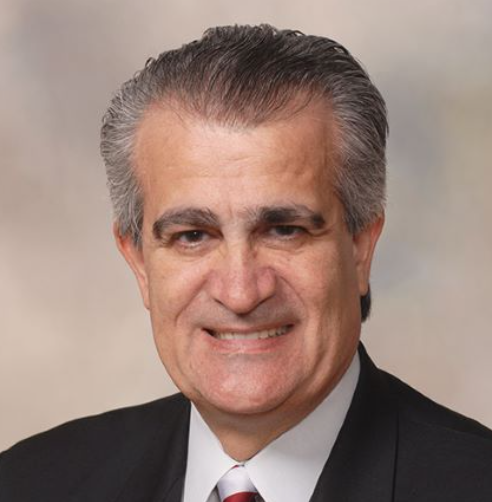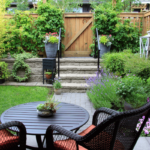
It’s the time of year when lawns start to look a little less green and a little more red, blue, or other hues thanks to political campaign signs.
To mark the 2024 presidential election, LawnStarter surveyed over 1,000 U.S. homeowners about their thoughts, concerns, and plans for displaying campaign signs on their lawns this year.
See the results below, including demographic insights such as age, education, political affiliation, and region.
Contents
Political Campaign Lawn Sign Survey
Ask the Experts
Where do politics and yard care cross paths? On the campaign trail, dotting front lawns across America.
We turned to a panel of lawn care pros to learn if yard signs can damage your beautiful turf, in addition to a panel of political experts to explore what rights homeowners and tenants have for displaying their political opinions. Read their insights below.
Lawn Care Experts:
- How do you deal with working on a lawn covered in political signs?
- How often do political signs get in the way of lawn care jobs?
- Can displaying political signs cause damage to your lawn?
Politics and Policy Experts:
- Where are political signs allowed to be placed? Where are they generally not allowed?
- Can landlords legally bar tenants from displaying political signs?
- Do local governments or HOAs have the legal power to regulate political signage?
- What should you do if an unauthorized campaign sign appears on your property?
- What are the legal repercussions of removing or vandalizing a political sign that’s in the public right-of-way?
- Which state has the most strict campaign sign laws?




Methodology
LawnStarter collected survey responses from a random sample of 1,009 U.S. homeowners aged 18 or older via Alchemer and Cint on Sept. 24, 2024.
Each response was anonymized using a unique user ID generated and assigned by Cint.
Get Ready to Vote
Election Day is Tuesday, November 5. Are you ready to cast your vote?
- Find your local voter registration deadline.
- Register to vote or update your registration with help from vote.gov.
- Learn more about state and local elections with help from your local election office.
- Make plans to vote early or absentee by mail if necessary.
- Explore accommodations and accessibility options ahead of Election Day.
Hire a local LawnStarter crew for a winning lawn and landscape this election season and beyond.
Media Resources
Bonus: More Demographic Stats from Our Survey
Question 1: How likely are you to display political signs on your property this election season?
Region
- Around 38% of swing state voters are very likely to put up signs this year, compared with just about 32% of voters in red and blue states.
Age
- Voters ages 18 to 44 are most likely to display political signs, while support wanes with those above 45.
Question 2: Have you displayed political signs at your home in the past?
Race + Ethnicity
- 73.8% of Black respondents have previously displayed political signs at their residence.
Question 3: What most concerns you about placing a political sign in your lawn? (Check all that apply).
Politics
- More Republicans indicate having no concerns (43.27%) about placing political signs, compared with 30.27% of Democrats.
Region
- Blue state voters are most concerned with offending or angering neighbors and loved ones (24.9%), while voters from swing states that voted for Trump in 2020 are least concerned (18.2%) with this.
Question 4: How many political signs do you have or plan to have on your lawn this year?
Region
- At 3.4%, Western residents are most likely to have 5+ signs in their yard this election season.
Question 5: Which sign(s) are you sporting this election season? (Check all that apply).
Politics
- A surprising 6.33% of Republican respondents will be sporting a Harris/Walz sign, while 7.3% of Democrat respondents will display signs supporting Trump/Vance.
Region
- Harris/Walz support is most prominent in the South (27.9%) and West (27.2%), and least prominent in the Midwest (20.2%).
Education
- Those with a college degree (28.9%) and voters with a doctorate, advanced, or professional degree (39.3%) are most supportive of Harris/Walz.
- Trump/Vance have about the same range of support across educational demographics, with those who graduated high school or have a GED most likely (28.6%) to put up their campaign sign.
Question 6: Why do you place political signs in your yard? (Check all that apply).
Gender + Sex
- Gay and lesbian respondents are over 2X more likely to want to put up signs to encourage civic engagement (37.9%).
Question 7: Where do you get political signs? (Check all that apply)
Gender + Sex
- Bisexuals are over 3X more likely than gay and lesbian voters (6.9%) and over 2X more likely than heterosexual respondents (10.8%) to have homemade political signs (24.3%).
Main Photo Credit: Jeff Herman / LawnStarter





